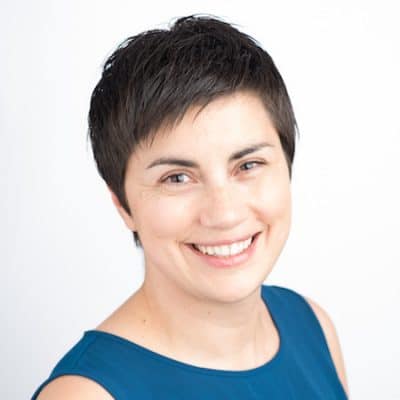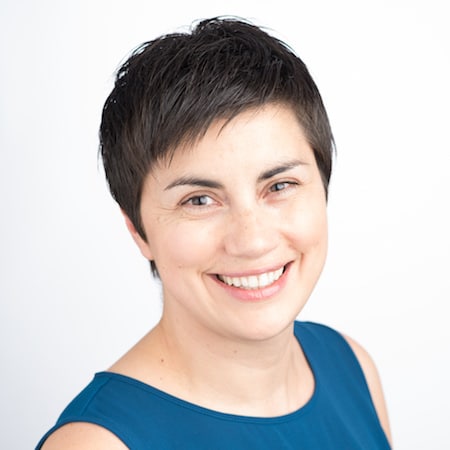 Katy Sherman — who will be PNSQC 2017’s Tuesday morning Keynote Speaker — likes to test conventional ways of doing things to see if they truly have staying power. In addition to keynoting, the director of software engineering at Premier Inc., in Raleigh-Durham, N.C., will be the final guest speaker on September 28 in our 2017 conference webinar series.
Katy Sherman — who will be PNSQC 2017’s Tuesday morning Keynote Speaker — likes to test conventional ways of doing things to see if they truly have staying power. In addition to keynoting, the director of software engineering at Premier Inc., in Raleigh-Durham, N.C., will be the final guest speaker on September 28 in our 2017 conference webinar series.
There is still time to register for the free webinar.
We recently spoke with Sherman to find out how she became passionate about testing, and what generally makes her tick. This interview has been edited and condensed.
Here’s what she had to say:
Q: What are some experiences that opened your eyes to the dynamic between developers and QA teams?
A: Quality testing requires a different type of knowledge. Whereas development requires a deep technical understanding of frameworks, tools, software design, and programming languages, the true power of QA lies in knowledge about the product. A great quality team member helps set requirements, understands the users and their needs, knows how the software is operated, what qualities of performance matter most and how to measure them, and has the technical background to automate the process and collaborate with developers.
Having this type of knowledge is the only way to achieve quality as a combination of three important characteristics: Conformance to requirements, user satisfaction, and performance. This type of judgment not only allows QA to make decisions on what to test (effectiveness) and how to test (efficiency) but most importantly helps to build quality into each step of the development process. And that’s difficult to achieve because it requires a fundamental change in both the QA role and their interaction with the developers.
Pull quote: “Quality has to become everybody’s responsibility. The entire team has to strive to the highest level of quality at each step along the way, from quality of the user stories to the quality of automation.”
Q: What strategies do you employ that have been successful in creating a smoothly operating cross-functional team?
A: I spend my days empowering QA engineers. I tell them they are the Masters of Quality. They orchestrate the entire development cycle focusing on quality of each and every step along the way. They are involved in the creation of the requirements, solution design, development, build and deploy, test design, and execution.
I coach developers on the broader understanding of quality. Our teams are small and completely cross-functional; we don’t have dedicated automation or performance testing groups. Every person wears many different hats, whether it’s coding, testing, or automation.
Developers and testers are two different breeds of engineers, but I find automation to be an area where their expertise and talents overlap. The trick is to show how they can benefit from working together and how the overall product quality improves from this close collaboration.
Q: What advice about successfully managing a cross-functional agile team would you give to a newbie to the process?
A: Lots of teams continue using the phased development cycle, only now the phases are very short and repeat themselves every couple of weeks. There’s a lot of pressure at the end of the sprint and no time to work on defects. This approach where you’re “doing” scrum but your iterations are simply 2-week long waterfalls is called “Scrummerfall.”
My first advice to new cross-functional teams is this: Stop the Scrummerfall and encourage deep meaningful collaboration between Dev and QA.
To do this they will need to push QA activities as much upstream as possible. QA has to be involved in every business discussion, design meeting and backlog review. They should be able to evaluate user stories, design the test strategy, and compare notes with developers as they write code.
Developers will write better, more thoughtful code, and QA will plan their tests armed with the knowledge about dependencies and impacted areas that only developers would know.
Q: How do you apply the principles of quality assurance in your non-work life?
A: In my free time, I hike and backpack. In fact, I am one of the leaders of a local meetup hiking group with over 8,000 members. Here’s the thing about backpacking: When you’re in the woods, everything you need is in your pack and you rely on your gear, food, and water for energy and protection. That’s why it’s crucial to prepare for the hike and make sure you have everything you need and a little extra in case of emergency.
The quality of your gear and packing can save your life. That’s why I check and double check the contents of my pack before I start down the trail. Because testing it in the middle of the woods can be too late.
Q: What value do you derive, professionally and personally, from presenting at conferences like PNSQC?
A: I can’t wait to meet Quality professionals and enthusiasts, share my experience and learn from them. Quality is the biggest challenge and also the most interesting aspect of my job. The world of Agile and its fast pace, the market competition and customers’ expectations, the balance between human and automated testing, all of it makes quality even more difficult than ever, but also more fascinating than ever.
And of course, I’ve never been to Oregon and am looking forward to seeing the beautiful Portland.
Join Katy Sherman as the guest presenter for the upcoming September 28th webinar. She’ll talk work sprints, her upcoming workshop, and the future (and possible demise!) of quality.




